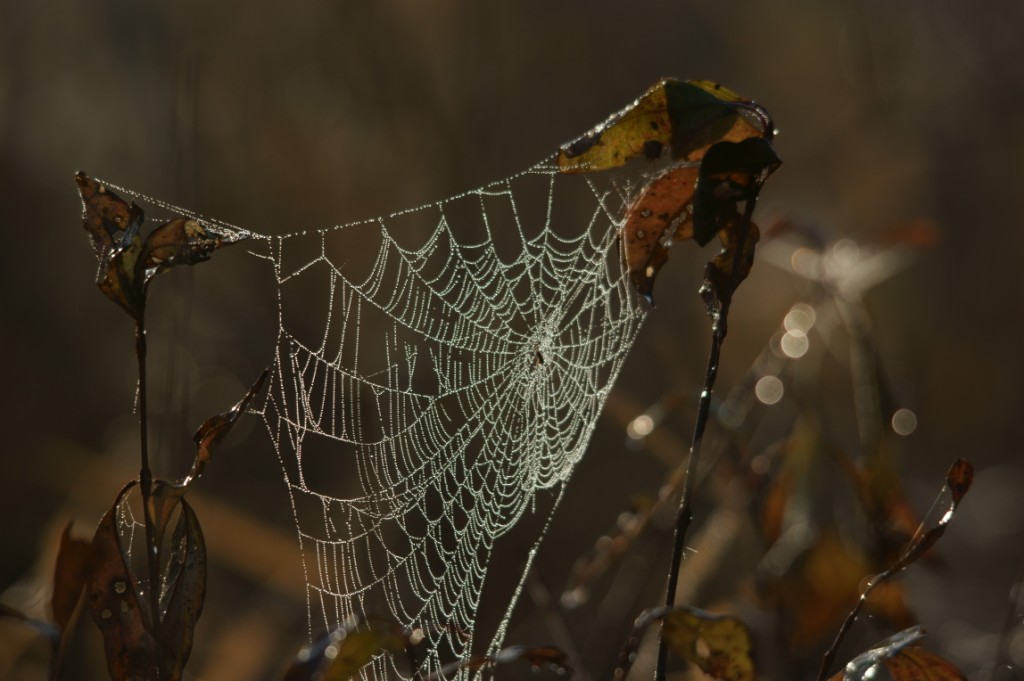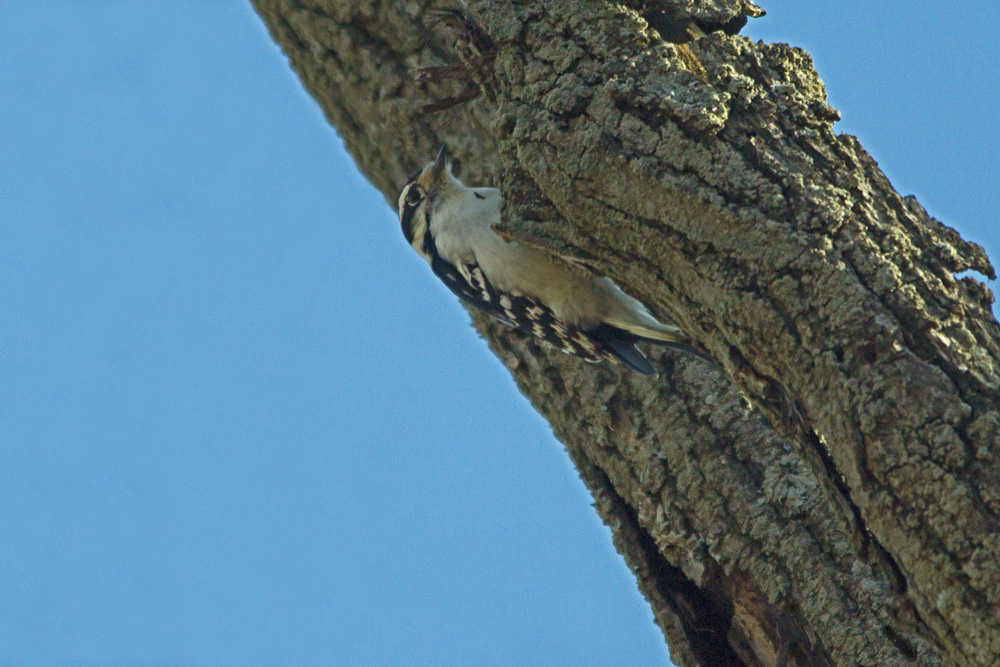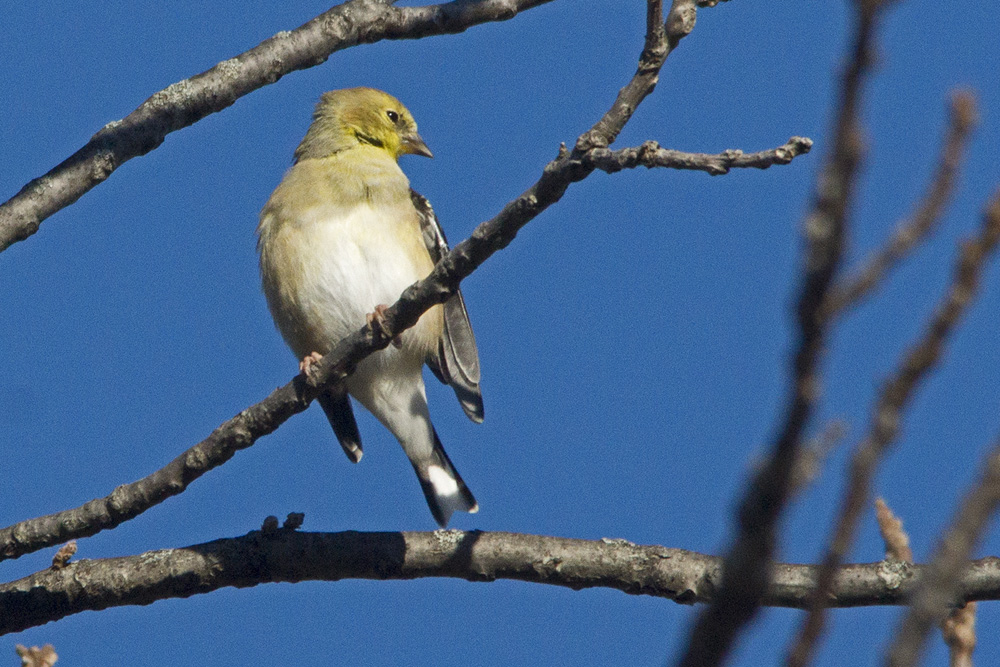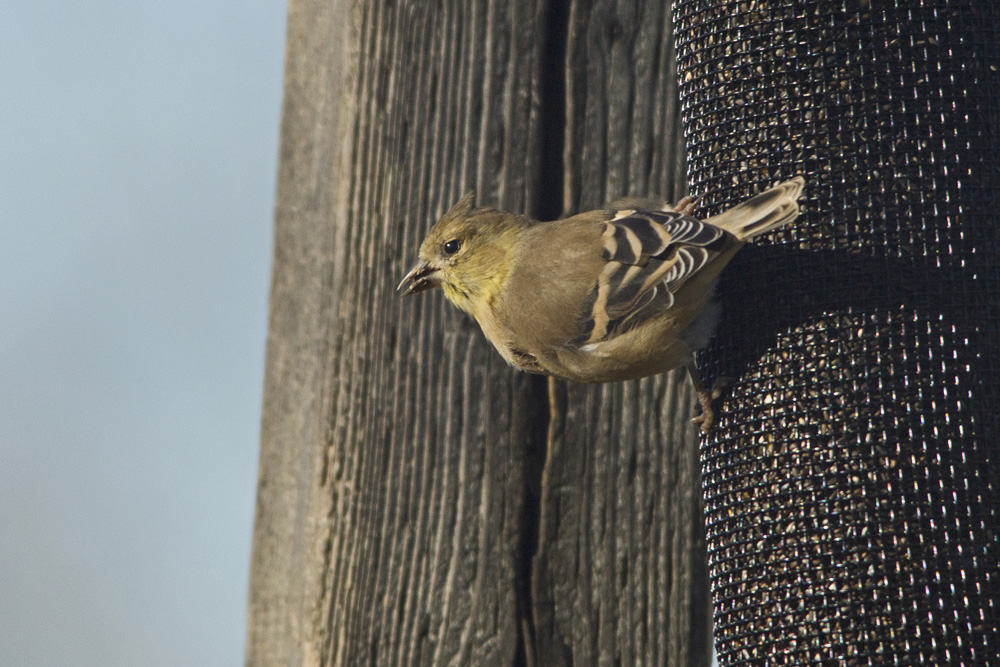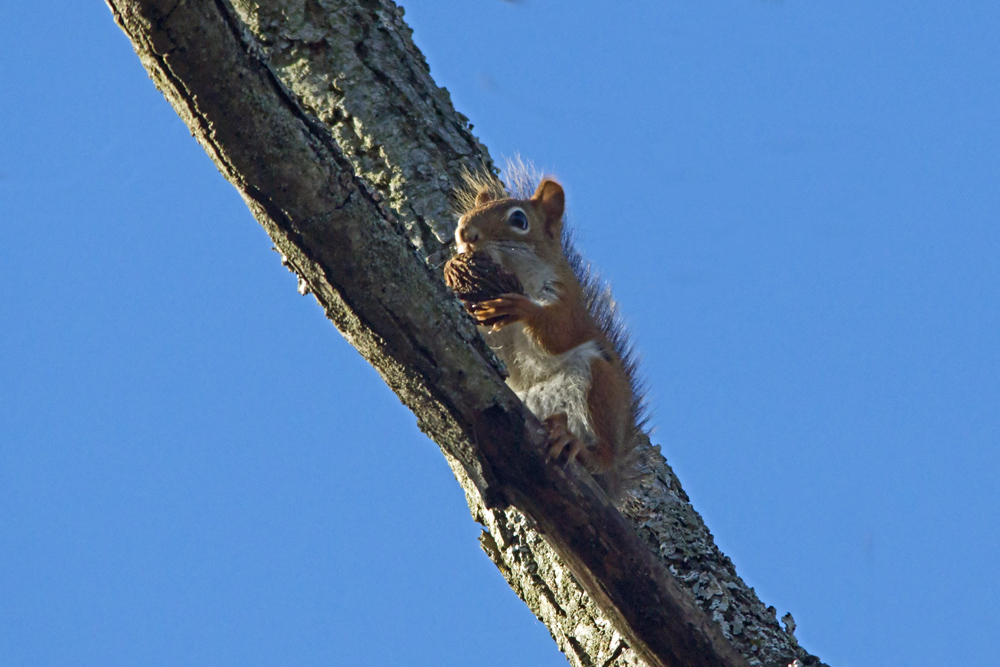It’s hard to believe, walking around in 20 degree temperatures in bright sunshine and wearing just t-shirts, that we’re on the threshold of Winter. Of course the birds know it. By far the majority of migrants have moved through and the birds we’re getting now will be Winter residents, most of them ready to hunker down here or relatively nearby. We’ve already had a couple of returning juncos – birds that were banded last Winter or the one before and have returned to Ruthven. It must be the predictable food supply from the feeders.
We’ve been out the last two nights trying for owls. The night of the 2nd/3rd Nancy banded 4 new Saw-whets and retrapped another (which we had banded a week or so ago) at Ruthven. I was at Taquanyah and retrapped a bird that had been banded at Ruthven on October 27th. These retraps suggest that some of the birds we’re catching may spend the Winter in the Ruthven area. The one I got was probably searching around for a suitable roost area to sit out the Winter – Taquanyah offers a lot of this habitat.
Last night I was at Ruthven and got another owl which brings our total up to 50: 40 at Ruthven and 10 at Taquanyah. Interestingly, on both nights I had disconcerting run-ins with coyotes. At Taquanyah the “banding bench” is about 200 meters from the nets. Upon arrival I dropped my gear at the bench and wandered down the trail to open the nets. I like to make the traverse in the dark in order to take in the stars and the many night sounds emanating from the marsh and underbrush – squabbling ducks, snorting deer, scrabbling mice. On the way back from the nets a pack of coyotes started howling and yapping just a hundred meters ahead….right where my gear was. I didn’t want them chewing into it so I turned on my headlamp and started running down the trail toward them yelling to let them know I wasn’t in the mood for any nonsense. Immediate silence. My gear was untouched and I didn’t hear or see a coyote for the rest of the night. Just to be safe though, I followed Farley Mowatt’s practice in Never Cry Wolf, and peed around the perimeter of the banding area, marking it as mine. I guess it worked……
Last night, on my own again, I began to cross the parking lot when, VERY close, just on the flats in front of the Mansion, a big pack of coyotes began carrying on. This group was not put off by my headlamp or vocalizations. I looked at the stick I was carrying for the nets…..hmmmm…..long and thin. I walked back to the lab and got something more sturdy before setting out for the nets down in the flats. But after their initial howling I never heard them again.
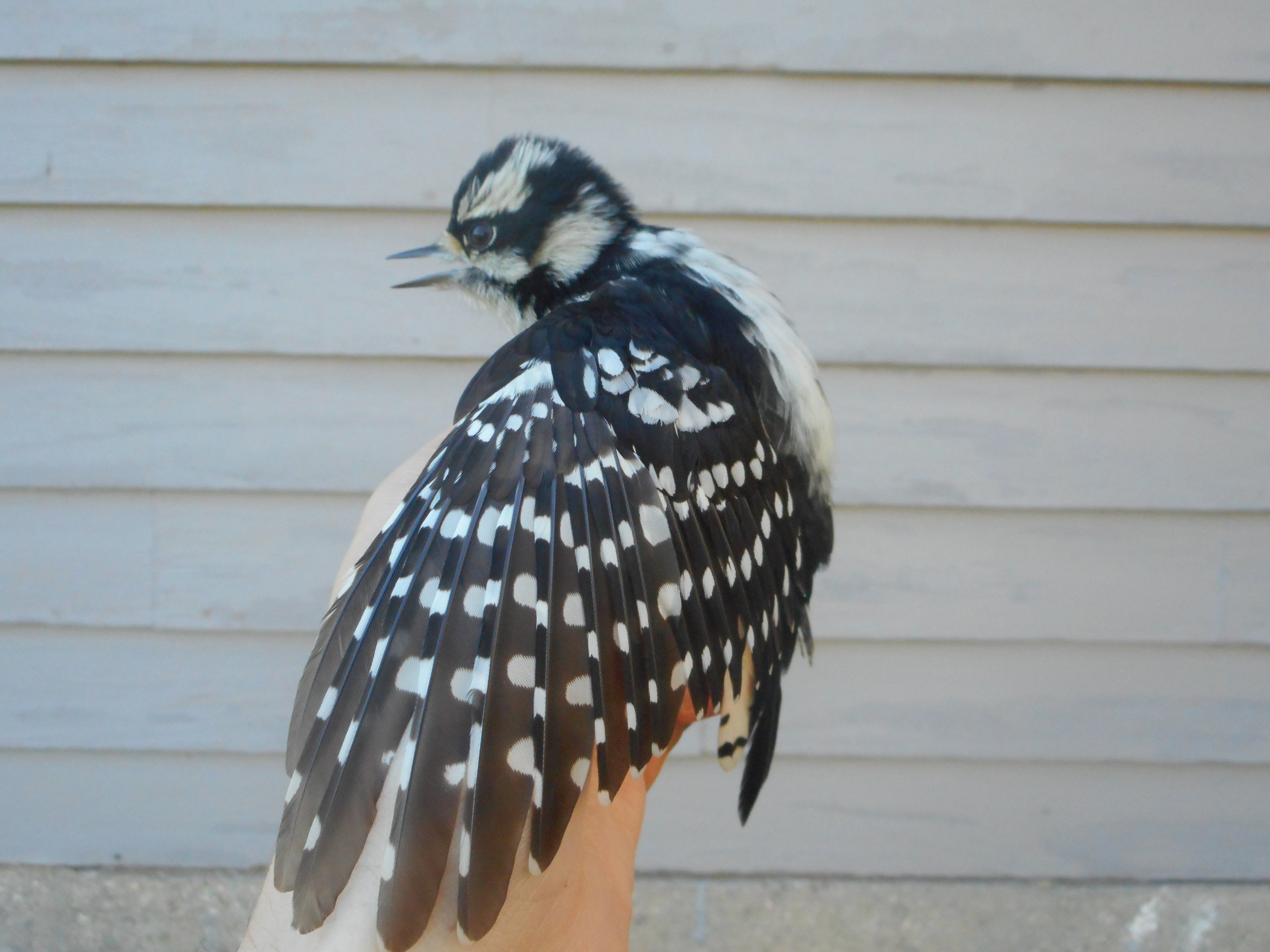
The uniformly brown primary coverts on this female Downy Woodpecker indicate that it is a young (HY) bird. -C. Scholtens
November 3rd
Banded 46:
4 Northern Saw-whet Owls (from the night before)
1 Golden-crowned Kinglet
4 American Tree Sparrows
1 Fox Sparrow
1 White-throated Sparrow
6 Dark-eyed Juncos
29 American Goldfinches
ET’s: 39 spp.
Fern Hill School:
It was another beautiful day at FHS. Today we were joined by the jk and sks of Grace Christian school who came to learn about banding and migration at Fern Hill. We managed to catch eight birds throughout the day and one of our Young Ornithologists- Pari, was able to demonstrate for the class all that she has learned in the banding lab.
Banded 4
1 White-throated Sparrow
3 Slate-colored Juncos
ET’s: 22 spp.
Janice
November 4th: Despite the late date, we’re still getting the occasional warbler – in this case a Yellow-rumped Warbler.
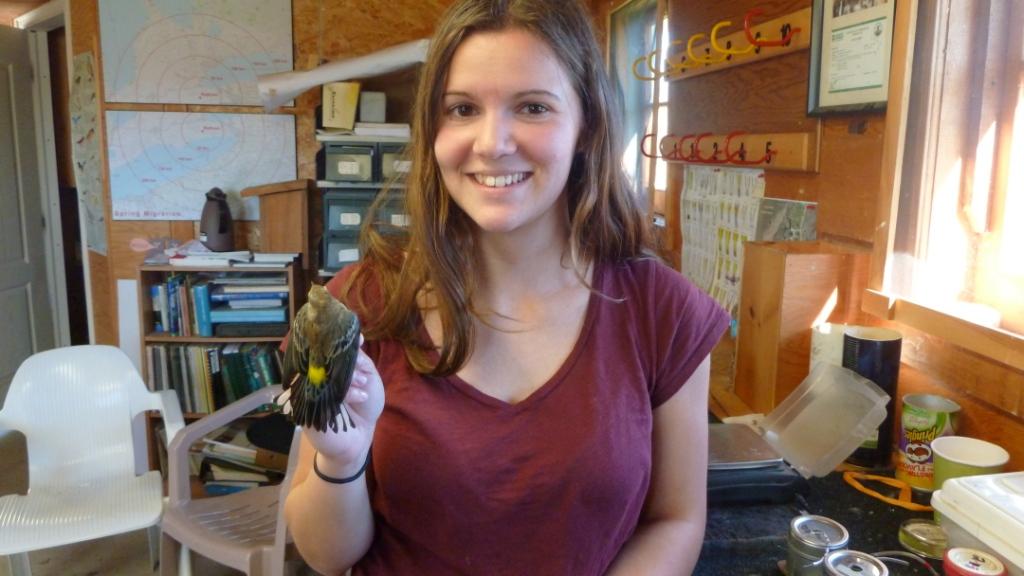
Banded 25:
1 Northern Saw-whet Owl (from the night before)
2 Black-capped Chickadees
1 Yellow-rumped Warbler
4 American Tree Sparrows
10 White-throated Sparrows
6 Dark-eyed Juncos
1 American Goldfinch
ET’s: 37 spp. Cute….but deadly. Red Squirrels can be terrible predators, eating bird eggs and nestlings and even killing birds in the mist nets. -B. McCreadie
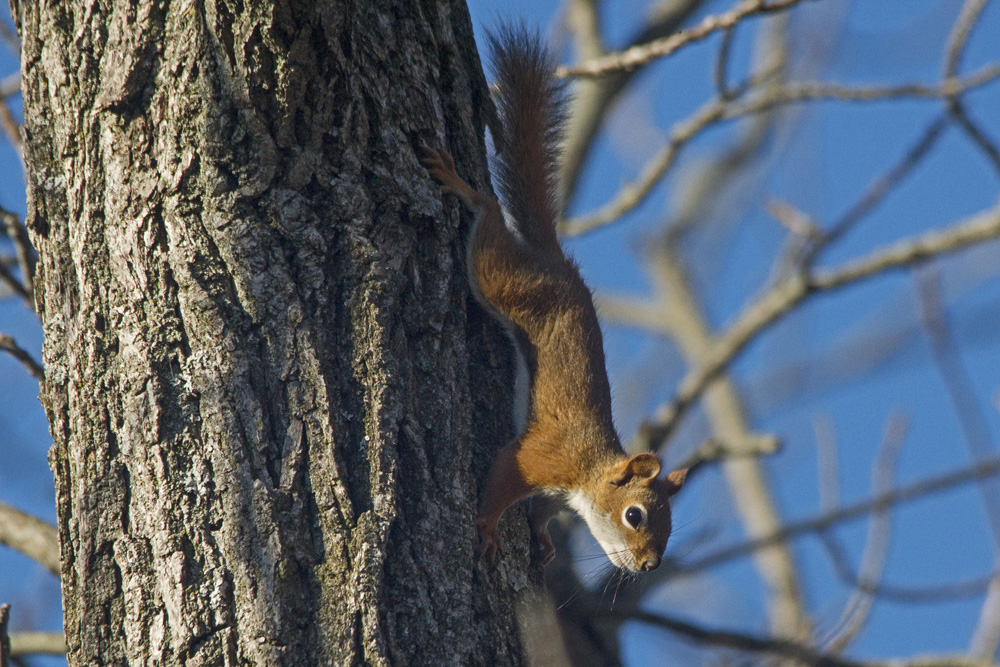
Fern Hill School:
A thick layer of fog settled over Fern Hill today and didn’t dissipate until around 12:30pm. This fog caused the birds in the area to get out and feed, resulting in 27 birds handled at FHS school today. In other Fern Hill news, as of this morning our field station now has electricity!
Banded 10:
1 Black-capped Chickadee
1 American Tree Sparrow
1 White-throated Sparrow
4 Slate-colored Juncos
1 House Finch
2 American Goldfinches
ET’s: 22 spp.
Janice

